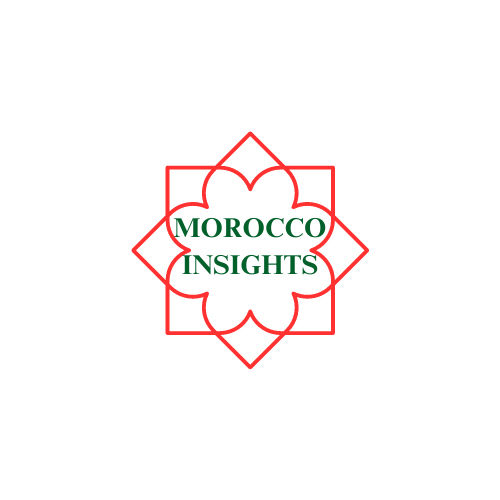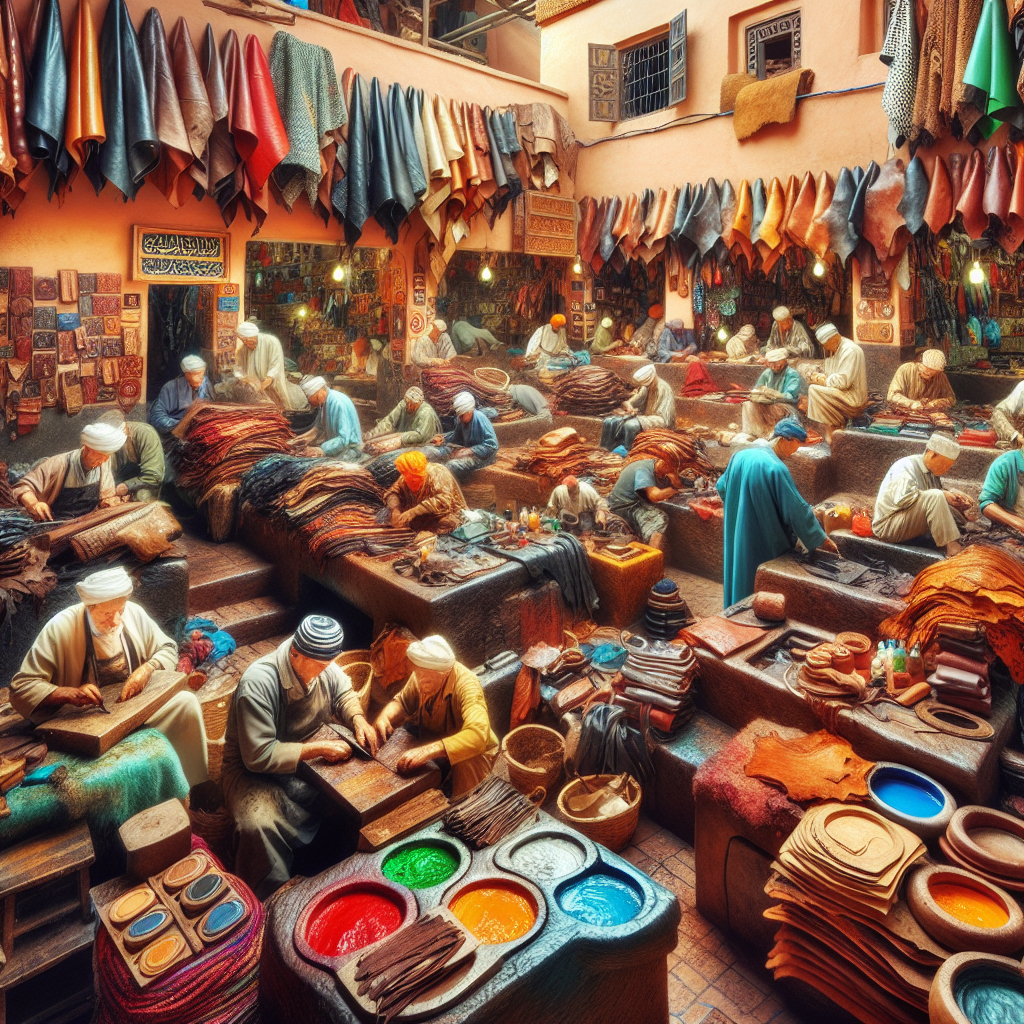Have you ever wondered how leatherworking became such a significant part of Moroccan cultural heritage? The art of crafting leather goods has been passed down through generations, preserving unique skills and techniques that are specific to this North African country. Leather tanneries in places like Fez and Marrakech offer a glimpse into the traditional process, where skilled artisans transform raw animal hides into beautifully finished products. Not only does leatherwork hold historical and artistic value, but it also serves as a thriving industry, contributing to Morocco’s economy and attracting tourists from around the world. Join us as we explore the rich history and cultural significance of leatherworking in Morocco.
The History of Leatherworking in Morocco
Leatherworking has a long and rich history in Morocco, dating back centuries. The origins of leatherworking in Morocco can be traced back to the ancient Moroccan Berber tribes who used animal hides to create essential items for their daily lives. These tribes developed the initial techniques of leather preparation and tanning, laying the foundation for the craftsmanship that would flourish in Morocco.
Origins of Leatherworking in Morocco
The ancient Berber tribes played a crucial role in the development of leatherworking in Morocco. These nomadic tribes, known for their resourcefulness and adaptability, relied on the animals they raised for their livelihood. They used the hides of these animals, such as goats and sheep, to create clothing, footwear, and other necessary items. The knowledge and skills of leatherworking were passed down through generations, shaping the unique Moroccan leatherworking tradition.
Development of Leatherworking Techniques
Over time, Moroccan leatherworkers refined their techniques and processes, incorporating new methods and materials. One significant development was the introduction of natural dyeing methods, allowing leatherworkers to create intricate and vibrant designs on their products. These techniques involved the use of natural materials like plants, roots, and minerals to create the dyes, resulting in a distinctive and authentic Moroccan aesthetic.
Leatherworking as a Traditional Craft
Leatherworking has long been considered a traditional craft in Morocco, deeply ingrained in the cultural heritage of the country. It has been passed down through generations, with artisans dedicating their lives to honing their skills and preserving the traditional techniques. Moroccan leatherwork is not merely a craft; it is a testament to the richness of Moroccan culture and a source of pride for the artisans who carry on this ancient tradition.
Traditional Leatherworking Techniques
Tanning and Preparing the Leather
The process of tanning and preparing the leather is a crucial step in Moroccan leatherwork. Traditionally, this involves removing the hair and fat from the animal hide and then treating it with a combination of natural substances to make it soft, durable, and resistant to decay. The use of traditional tanning methods, such as using natural extracts like tree barks and oils, adds to the uniqueness of Moroccan leather products.
Natural Dyeing Methods
Natural dyeing methods are an integral part of Moroccan leatherworking. Artisans use a variety of natural materials, including plants, minerals, and even insects, to create a wide range of vibrant and earthy colors. Each dyeing process requires special techniques and meticulous attention to detail, as the artisans strive to achieve the desired shades and hues. These natural dyes not only provide aesthetic appeal but also contribute to the sustainable and environmentally friendly nature of Moroccan leatherwork.
Embossing and Tooling
Embossing and tooling are techniques that add intricate patterns and designs to the surface of the leather. Moroccan leatherworkers use a variety of tools, such as stamps and punches, to create detailed motifs inspired by Moroccan art, architecture, and nature. The process requires precision and skill, as the artisan carefully presses the tools onto the leather to create raised or recessed designs. Embossed and tooled leather products are highly sought after for their intricate craftsmanship and visual appeal.
Stitching and Assembly Techniques
The stitching and assembly techniques used in Moroccan leatherworking are essential for creating durable and functional products. Artisans employ various stitching methods, such as saddle stitching, to ensure that the seams are strong and long-lasting. These techniques, handed down through generations, ensure that Moroccan leather products are not only aesthetically pleasing but also practical and built to withstand the test of time.
Leatherworking Centers in Morocco
The Leather Tanneries of Fez
Morocco is home to several renowned leather tanneries, with Fez being one of the most famous leatherworking centers in the country. The tanneries in Fez date back to medieval times and continue to operate much the same way, using traditional methods and techniques. These tanneries are known for their vibrant dyeing pits, where the leather is soaked in natural dyes, resulting in a kaleidoscope of colors. Tourists visiting Fez often flock to these tanneries to witness the fascinating process and purchase exquisite leather goods.
Leatherworking in Marrakech
Marrakech is another significant center for leatherworking in Morocco. The city boasts a vibrant leather souk, where artisans offer a diverse range of leather goods. From bags and belts to shoes and jackets, visitors can find an array of beautifully crafted products reflecting the traditional and contemporary styles of Moroccan leatherwork. Marrakech’s leatherworking scene not only serves the local market but also caters to the growing demand for ethically made, high-quality leather products from around the world.
The Skills of Leatherworkers in Essaouira
Essaouira, a coastal city in Morocco, is known for its skilled leatherworkers who excel in the art of hand-stitching. Leather products crafted in Essaouira are highly regarded for their fine quality and attention to detail. The city’s artisans take great pride in their work, producing intricate leather goods that reflect the city’s laid-back coastal charm. The leatherwork of Essaouira is highly sought after by both locals and tourists, adding to the region’s economic importance and cultural significance.
Leatherworking Tools and Materials
Traditional Leatherworking Tools
Moroccan leatherworkers use a range of traditional tools to carry out their craft. These tools include awls, knives, punches, and hammers, each serving a specific purpose in the leatherworking process. The use of these traditional tools not only demonstrates the artisans’ skill but also contributes to the authenticity and unique character of Moroccan leatherwork.
Traditional Dyes and Pigments
Natural dyes and pigments derived from various sources play a crucial role in Moroccan leatherworking. Artisans use materials such as indigo, henna, saffron, and pomegranate peels to create an extensive palette of colors. These natural dyes not only produce beautiful shades but also ensure that the leather products are environmentally friendly and free from harmful chemicals.
Leather Types and Animal Hides Used
Moroccan leatherworkers utilize a wide range of leather types and animal hides to create their products. The most commonly used animal hides include goat, sheep, and cow, each offering unique characteristics and textures. Different types of leather, such as full-grain, top-grain, and suede, are chosen based on the desired end product. The choice of leather type and animal hide influences the final appearance, durability, and functionality of the leather goods.

